Daniel Hopsicker
It’s July 1, 1972. The TV series Bewitched is airing its final episode, Attorney General John N. Mitchell is resigning as chairman of President Nixon's re-election committee, and Sammy Davis JR’s aptly-titled single “Candy Man” is moving smartly up the charts.
And its also the date of Barry Seal’s arrest in New Orleans for conspiracy to export enough C4 plastic explosive to blow the island of Cuba half-way toward the Florida Keys, an arrest which will eventually result in a move on Seal's part that seems to confirm that the explosive rumor about him we've been trying to track down–that he flew a get-away plane out of Dallas after the JFK assassination–is true. Or, rather, is likely true, because we'll never know for certain.
His arrest for attempting to export 7 tons of platic explosive is—although no one suspects it yet—one of the many twists and turns of the Watergate Scandal. And he knows it. When Customs Agents slap the cuffs on Seal in New Orleans, he says, angrily, “All I need is a bunch of Cubans after me.”
"All our secrets are the same."
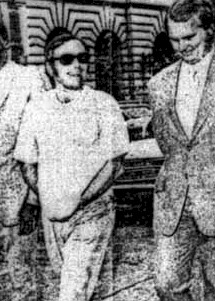 It was in the sun-drenched Albuquerque study of two of America's most prominent writers —one a Guggenheim Fellow, National Book Award winner, and former member of the National Security Council, the other a celebrated investigative reporter whose first book took on the entire power structure in Kentucky —that I first heard what I later came to think of as "The Question."
It was in the sun-drenched Albuquerque study of two of America's most prominent writers —one a Guggenheim Fellow, National Book Award winner, and former member of the National Security Council, the other a celebrated investigative reporter whose first book took on the entire power structure in Kentucky —that I first heard what I later came to think of as "The Question."
Answering that question, to my satisfaction and hopefully yours, is where this story will end. In between are a few carefully chosen fragments, shards from the broken mirror that I have—that we all have—been attempting to piece back together for the past 50 years.
To understand what follows, here are a few insights that seem to have particular relevance to this story from a few of Barry Seal’s contemporaries kind enough to share with me some of their accumulated wisdom.
An active and still-living(and thus necessarily anonymous) participant in American “clandestine operations,” for example, who once told me something that upon reflection seems obvious on its face.
He said, “All our scandals are the same scandal. All our secrets are the same.”
What he meant, I believe, is that serious American scandals almost always arise from the fertile soil of this nation’s chief post-WWII money-making propositions: selling weapons and/or running drugs.
These are often said to be the No. 1 and No. 2 industries in the world, in terms of foreign trade, and it matters not which is ranked first, and which second, because they are two sides of the same coin. Many people to whom you would like to sell weapons can only pay you back with an equivalent quantity of illicit drugs.
The three most over-rated things in this world,” he told me, “are home cooking, home loving…and the FBI.Then there's something a famous Southern lawman named Rex Armistead told me, which helps me keep from getting my hopes up too much when there's an announcement that there will be a full FBI investigation of whatever the latest outrage happens to be: "The three most over-rated things in this world,” he told me, “are home cooking, home loving…and the FBI."
Finally there's what a retired US Customs Agent who had spent much of his career investigating Barry Seal said when he learned how shocked I'd been at the solicitousness of so many Americans towards Fidel Castro back in the 50’s, when he was just another bandito in the hills. These Americans had all shown their concern for Fidel by running weapons to him to defend his guerrilla band against the cruel Cuban tyrant Batista.
Their number included CIA guys, Mafia guys, and even a few characters from what they call the “Dixie Mob,' including Barry Seal, David Ferrie, and even Jack Ruby, who I was shocked to discover all knew each other!
“What did you expect?”asked my Customs informant with a bemused smile. "Of course they all know each other. There aren't that many ‘players’ out there."
Most of what follows drives home one or another of these points.
Welcome to Connected-land!
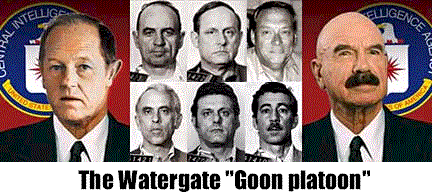 Our story begins during the summer of 1972, a more innocent time where few suspected that the breaking Watergate scandal will contain links to narcotics trafficking and arms smuggling.
Our story begins during the summer of 1972, a more innocent time where few suspected that the breaking Watergate scandal will contain links to narcotics trafficking and arms smuggling.
During the CIA’s shut-down of what Watergate investigators will later call “The Mexican Connection,” the arrest of Barry Seal will merely be “collateral damage”
But it is what happened after Seal’s arrest that today provides persuasive evidence that Barry Seal was involved in the Kennedy assassination, and viewed it as his "ace in the hole" during his often-acrimonious dealings with his superiors.
On July 3 The New York Times reports a DC-4 has been seized at the Shreveport Regional Airport, loaded with enough explosives to fuel a coup in a good-sized Latin American country. There’s almost seven tons of C-4 explosives, there’s 7,000 feet of primer cord, 2,600 electric blasting caps and 25 electrical detonators.
Authorities say the explosives are destined for Cuban exiles in Mexico, who plan to use them to overthrow the government of Fidel Castro. Federal officials say seven men in Texas and Louisiana have been arrested on charges of conspiring to smuggle munitions to Mexico.
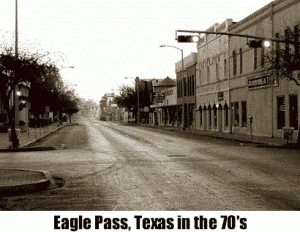 They include Richmond Harper, a millionaire rancher and bank director from Eagle Pass, Texas, a former Inspector with the INS, a New York Gambino-connected Mobster named Murray Kessler, and pilot Barry Seal.
They include Richmond Harper, a millionaire rancher and bank director from Eagle Pass, Texas, a former Inspector with the INS, a New York Gambino-connected Mobster named Murray Kessler, and pilot Barry Seal.
Kessler, a frequent house guest at the Harper ranch, has a record of six felony convictions on charges of interstate theft, transporting stolen property, bookmaking and conspiracy to possess heroin.
A surveillance report written after he landed at the San Antonio airport describes him as “50-ish and Jewish-looking, wearing a open-collar gray shirt with a gray sports suit, accompanied by a “bleached blond in white slacks and a red polka-dotted jacket.”
More important than the bleached blond wearing polka dots, to our story, at least, is that Murray Kessler according to former DEA agent Dick Gustafson, who knew him, is “an anti-Castro guy, which was like a mantra he carried around with him.”
Stirring the pot a little thicker, Kessler was also a known associate of Guy Banister and David Ferrie in the 1960’s.
“He had a lot of familiarity with that group of ‘yahoos’ in New Orleans,” Gustafson says. “That’s how I figure he met Barry, who was involved with Guy Banister and Ferrie back then too.”
The Shut-down of the Mexican Connection
It will come out at their trial that the men were busted by a US Customs undercover agent with CIA connections with whom Kennedy assassination aficionados are familiar named Cesario Diosdado, a participant in one of the stranger episodes occurring on November 22, 1963.
In Miami, Cuban Alpha 66 head Antonio Veciana reported that several hours after the assassination Caesar Diosdado mysteriously showed up at his home unannounced.
“You don’t know anything about Kennedy, do you?” Diosdado asked.
When Veciana replied “no,” Diosdado seemed satisfied. Veciana felt he was being tested, so didn't tell Diosdado that he had seen Oswald in Dallas a month earlier, he later testified, because “he didn't want to get involved.”
JFK assassination investigator Gaeton Fonzi reported: "Veciana said as soon as Diosdado walked in the door he told him, ‘hey, don't worry about a thing, I don't even know why I'm doing this, they just told me to do it, interview some Cubans.’”
What’s been busted up, later court testimony reveals, is a weapons for heroin deal, masterminded by “rancher-banker” Richmond Harper, who is described as a “tall lean guy wearing a string tie and cowboy boots and a cowboy shirt with monogrammed initials “RCH.”
It’s a description which fits him, Seal widow Debbie agrees, having seen him when she flew in to the airport in Eagle Pass with her pilot husband, so the two men could confer while awaiting trial.
Any friend of Zapata's a friend of mine
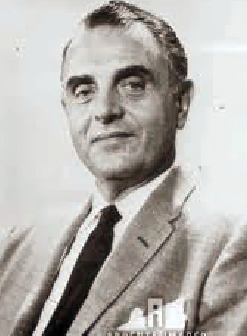 Time to stir the pot a little thicker: It was through Richmond Harper's’ Eagle Pass Texas ranch that Oswald’s friend in Dallas, oilman and CIA asset George DeMohrenschilt had entered Mexico en route on “a walking tour” of Central America that led him to be in Guatemala for the launch of “The Bay of Pigs invasion.
Time to stir the pot a little thicker: It was through Richmond Harper's’ Eagle Pass Texas ranch that Oswald’s friend in Dallas, oilman and CIA asset George DeMohrenschilt had entered Mexico en route on “a walking tour” of Central America that led him to be in Guatemala for the launch of “The Bay of Pigs invasion.
After DeMohrenschildt's sudden death by shotgun on the eve of his testimony to the House Select Committee on Assassinations—which his wife strenuously said was not a suicide—his personal address book was located, containing an entry reading: "Bush, George H.W. (Poppy) 1412 W. Ohio see also Zapata Petroleum Midland."
Richmond Harper is also an associate of the man known as Carlos Marcello's front man, Herman Beebe. And, according to a statement Barry Seal issued later, he had "very deep ties right into the (Nixon) White House."
Those ties were to the head of US Customs, Myles Ambrose, who was also a Special Consultant to the President on Narcotics, and who was there at the birth, in 1973, of Nixon’s demon spawn, the DEA.
Myles Ambrose, according to former Customs officials who were disgusted at having had to work under him, would visit Harper and go hunting with him on his ranch on the border. He was a guest at what must have been the wedding of the year down in Eagle Pass, the nuptials of Richmond Harper’s daughter, an event her proud Daddy commemorated with the slaughtering of 600 steers.
"We tried to warn him [Ambrose],” stated one Customs official at the time. “Tell him that this guy [Harper] is bad. He wouldn't listen."
When we finally reached Myles Ambrose for his version of events, and his recollections of Barry Seal, he was perhaps understandably defensive.
“Frank is dead now. We can talk.”
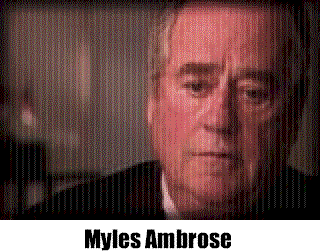 Ambrose said he had no recollection of the warning. It was only after his visits that he discovered that Harper had been the defendant in a civil suit involving the mislabeling of dog food–food not intended for humans—that was then shipped over the border from Mexico to the United States.
Ambrose said he had no recollection of the warning. It was only after his visits that he discovered that Harper had been the defendant in a civil suit involving the mislabeling of dog food–food not intended for humans—that was then shipped over the border from Mexico to the United States.
At any rate, he had only ever visited the Harper ranch once, he said emphatically.
He had been the guy, he told me, changing the subject, who had shepherded the establishment of the DEA through Congress. “I got to Tip O’Neill,” he told us. “And that kept the partisan stuff out.”
During my interview with him, I felt Ambrose’s displeasure at some of my questions, which, in fairness, may have sounded slightly more suspicious than someone is used to fielding who has been a Special Consultant on Narcotics to President Nixon.
But whatever the reason, Ambrose became a bit over-eager to share his thoughts on the involvement in the drug trade by folks on the other side of the aisle.
“I was with Treasury back in the late Fifties, when Bobby Kennedy was running the Kefauver Committee Hearings on Organized Crime,” Ambrose said. “I know for a fact that there was a yellow sheet (investigative report) on a meeting in Havana where Meyer Lansky gave two kilos of heroin to Frank Sinatra to bring back to the States so he (Sinatra) would have a little ‘walking-around’ money.”
“But because Sinatra was helping Kennedy get elected, his brother removed all reference to this from the Committee’s report.”
Ambrose left office shortly after his friendship with Harper was revealed. Years later, Nixon aide Chuck Colson told Senator Lowell Weicker two pieces of information on Myles Ambrose that should never go together.
1. "Ambrose set up the CIA in the Drug Enforcement Administration.”
2. Ambrose had cordial relations with certain Mafia figures.”
Even the DC-4 Barry Seal was piloting loaded with 7 tons of C4 plastique had some heavy connections. It was owned by a man, James Boy of Fort Lauderdale, with whom Seal will be arrested in Miami in 1983 as part of the DEA’s Operation Screamer.
As a result of that arrest, Barry Seal will “get with the program” and move his smuggling activities up to Mena Arkansas. And the rest, of course, is history.
“The trial of the C4 Seven”
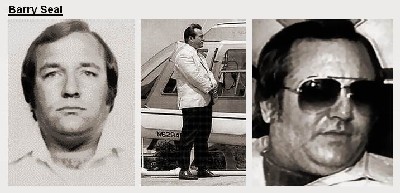 One clue to Seal’s status is that, after having been caught illegally exporting 7 tons of C4 explosives, no one was in any hurry to bring him to trial.
One clue to Seal’s status is that, after having been caught illegally exporting 7 tons of C4 explosives, no one was in any hurry to bring him to trial.
But when they did, an extraordinary document surfaced, which clearly shows that Barry Seal viewed his participation in the Kennedy assassination as a bargaining chip, a laminated "get out of jail" card to be for the rest of his life.
Both the prosecutor and the judge received an anonymous (though the envelope bearing the letter is clearly in Barry Seal’s handwriting) letter threatening that unless the charges were dismissed, the sender would blow the cover off matters pertaining to “national security.”
The heading reads “CJ Simpson de Cuba.”
“Due to personal initiative and desire to see justice done this letter is mailed to you and your associates,” the letter reads.
“The United States two-count indictment against seven men on charges of conspiracy to ship “implements of war” out of the United States, without having approval of the government, has no chance to succeed.”
“I worked for the CJ Simpson de Cuba Drilling Company, which had three rotary drilling rigs operating in Cuba. Whether you or any of your associates are aware of the number of “implements of war” shipped by that company out of the United States as components of drilling equipment, I have no idea. But I advise you to find out!
These shipments of “implements of war” by the CIA had no known open approval of the United States Government. Yet I am sure that your attitude towards it would be that as long as it is done by a federal agency, it is correct. If this is your assumption, then you are dead wrong.
I can name names of agents involved in these shipments. The whole sorry mess of the CIA putting Fidel Castro into a position to overthrow the government of Juan Batista has never been told to the public.”
The letter, on its surface, is puzzling. While it might still have been embarrassing if the size of the assistance the CIA provided Fidel Castro became known, any resulting scandal would clearly have not risen to a level of seriousness where it might threaten to compromise current operations.
Vietnam and Cambodia were on the front burner in 72. Castro and Cuba was old news.
"That Bay of Pigs Thing"
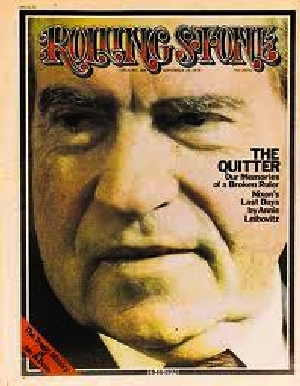 The letter couldn’t be taken literally. But was it making some sort of oblique reference only understood by insiders? The way Nixon did while trying to get the FBI to call off the Watergate investigation?
The letter couldn’t be taken literally. But was it making some sort of oblique reference only understood by insiders? The way Nixon did while trying to get the FBI to call off the Watergate investigation?
"Look, the problem is that this tracks back to the Bay of Pigs, the whole problem is that this will open the whole— the whole Bay of Pigs thing," Nixon is caught saying, on the Watergate Tapes.
"And the President just feels that ah, without going into the details–don't, don't lie to them to the extent to say there is no involvement, but just say this is a comedy of errors, without getting into it, the President believes that it is going to open the whole Bay of Pigs thing up again and, ah…they should call the FBI in and (unintelligible) don't go any further into this case period!”
H.R. Haldeman later testified that Nixon's references to Howard Hunt and the Bay of Pigs was Nixon’s way of making an oblique allusion to the Kennedy assassination.
Could the "political dynamite" the letter-writer hoped to be flinging in the judge’s face have something to do with the company involved, CJ Simpson de Cuba?
The name CJ Simpson de Cuba, a little research reveals, occurs in the literature of the Kennedy assassination in the most amazing context imaginable… A report by a U.S. Secret Service agent in Chicago that a CJ Simpson de Cuba employee named Homer Echevarria knew about the Kennedy assassination…before it happened.
The House Select Committee on Assassinations Report cited the incident as particularly troubling.
The informant "reported that he had knowledge of a group of Chicago Cubans, allegedly anti-Castro, who were bitterly opposed to President Kennedy.” The informant
had been attempting to negotiate a sale of machine guns to Homer Echevarria. The day before the assassination of President John F. Kennedy Echevarria told the informant that 'we now have plenty of money…as soon as 'we' take care of Kennedy.'”
Homer Echevarria, the man making threats against the President, worked for the CJ Simpson Oil Drilling Company in Cuba, and then later in Dallas.
It prompted an agent in charge of the Chicago field office of the Secret Service to write a memorandum about "a group in the Chicago area who may have a connection with the JFK assassination."
Again, for emphasis: three days after the JFK assassination, a Secret Service Agent in Chicago reported that somone and who worked for CJ Simpson de Cuba, the company Barry Seal is citing to blackmail his judge with "national security concerns" in his trial for exporting explosives—knew President Kennedy was going to be assassinated before it happened. Moreover he was associated with connected with the DRE and the 30th of November Movement—the two groups said to be training at the CIA's "rogue" camp for assassins in Lacombe, Louisiana.
Cuba, the guns, New Orleans, everything"
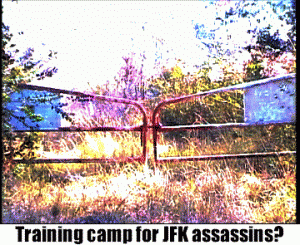 New Orleans sits alongside not just the Mississippi, but a large freshwater lake, Lake Pontchartrain. For well over twenty years assassination researchers and government investigators have suspected that a shooter team for the Kennedy assassination came from the anti-Castro guerrilla training camp on the north shore of Lake Pontchatrain, in the tiny town of Lacombe.
New Orleans sits alongside not just the Mississippi, but a large freshwater lake, Lake Pontchartrain. For well over twenty years assassination researchers and government investigators have suspected that a shooter team for the Kennedy assassination came from the anti-Castro guerrilla training camp on the north shore of Lake Pontchatrain, in the tiny town of Lacombe.
The two exile Cuban groups with which Echevarria was associated, the DRE and the 30th of November Movement, were the groups using what is often referred to as the CIA’s rogue, renegade, or black training camp in Lacombe.
The HSCA found that the 30th of November group was backed financially by a Chicago-based organization run by Paulino Sierra, and that the DRE had financial support from organized crime, and that Sierra's money came from "hoodlum elements, and that Sierra was linked to the Lake Pontchartrain camp and the Mafia and the Castro assassination plots.
The camp referred to is the same one where New Orleans DA Jim Garrison suspected brothers Mike and Bill McLaney had been providing Cuban exiles with a renegade off the books training site and arms cache, courtsey the CIA.
Garrison said there had been two anti-Castro groups training north of Lake Pontchatrain, one "overt," the other "covert."
The covert group, according to Garrison, was led by David Ferrie, who drilled five-man commando teams in guerrilla warfare practice and infiltration techniques on a site adjacent to the McLaney cottage. According to the New Orleans States-Item. "Immediately after the Lacombe raid, the so-called 'overt' Cuban group disappeared."
When we asked the engaging but slippery "CIA's man in '60's New Orleans" Gordon Novel if he had known the McLaney brothers, his answer was interesting. "I knew Mike McLaney by name, a CIA guy, supposedly. Dead now."
"But," he continued, "here's the problem of dealing with intelligence: its a beehive. Each cubicle is like this. McLaney over here and me over here, see? We're in separate cubicles, and our operations never overlapped. Just because he did this and I did that and we were both in New Orleans doesn't mean we ever came in contact."
"Everybody know everybody in New Orleans"
While doing research in Louisiana in 2000, I identified and visited Mike McLaney’s Lacombe property. It's a spooky place, filled with ghosts, none of whom would agree to be interviewed on the record.
So, for what follows, I’ve relied on what I consider the most reliable JFK researched to cover the subject:
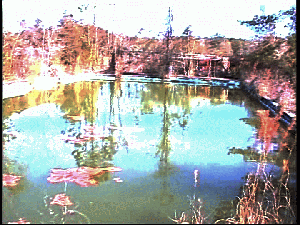 In July of ‘63 a group of Cuban exiles from Miami arrived and joined the anti-Castro guerrilla training camp at Lacombe.
In July of ‘63 a group of Cuban exiles from Miami arrived and joined the anti-Castro guerrilla training camp at Lacombe.
Not long after the Miami exiles arrived, Lee Oswald offered his services to the exiles. Whether Oswald is patsy or conspirator or emissary from the Spiders From Mars, he was there, in the company of men like Guy Banister, David Ferrie, and CIA agent David Atlee Philips.
At some point, Mike McLaney sent the CIA a detailed plan for knocking out three Havana refinerie. But instead of getting his plan approved, he got an urgent phone call from Washington warning him “not to attempt such a thing under any circumstances.”
Carlos Marcello associate Sam Benton had more than two tons of dynamite beside McLaney's cottage. to deliver this "big bang" Castro’s oil refineries Benton was negotiating to obtain a B-24 aircraft.Two planes were to take off from an airstrip near the Lacombe camp, then fly on to Havana .
On the other hand, Royal Dutch Shell Oil Corporation retained a fondness for their seized refineries in Havana, as well as a reluctance to return at some future date to discover bomb craters where their refinery once stood. The raid was set for August 1 1963. Prodded by Bobby Kennedy, on July 31st the FBI raided the house in Lacombe and the training camp nearby.
Fervent anti-communism is all well and good, apparently; but business is business.
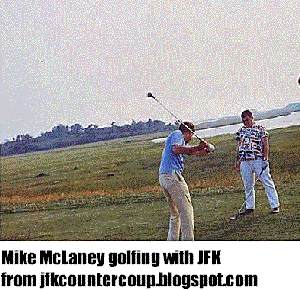 The FBI’s Lacombe raid assumed a prominent role in Jim Garrison’s investigation of the Kennedy assassination. He believed that the exiles training there—for an assassination attempt on Castro—had been ‘spun off’ into the successful attempt on Kennedy.
The FBI’s Lacombe raid assumed a prominent role in Jim Garrison’s investigation of the Kennedy assassination. He believed that the exiles training there—for an assassination attempt on Castro—had been ‘spun off’ into the successful attempt on Kennedy.
So just who were Mike and Bill McLaney? Mike was a casino owner in Havana, where one of his employees, Lewis McWillie, was Jack Ruby's best friend. When Fidel Castro took power, Mike McLaney was arrested for three months, then freed, and continued to operate under Fidel Castro in hopes of becoming gambling czar of Cuba, hopes nursed by having paid out $102,000 to Fidel Castro's Ministry of Gambling, Watergate burglar Frank Sturgis.
When the Casino Nacional was nationalized in 1960 he lost $7 million. McLaney's brother, Bill, owned the Carousel Club in Las Vegas. It is presumably "just a coincidence" that Jack Ruby's club in Dallas is also called the Carousel Club.
Life Magazine once printed a story linking McLaney with Meyer Lansky, and he responds by filing a multimillion-dollar lawsuit. When the magazine produced newspaper clippings that confirmed that no casino operated in Havana without the consent of Meyer Lansky, his suit was thrown out.
The Internal Revenue Service then rubbed a little salt in Mike's wound by filing income tax evasion charges him. He was convicted of evading $118,000 in taxes and sentenced to three months in Federal prison.
A personal friend of J Edgar Hoover
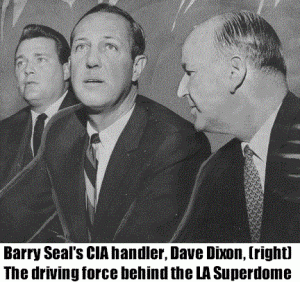 Because of the Life brouhaha, the Miami Police began an investigation of McLaney. "In the course of the conversation Mr. McLaney named some of his close friends," their report said. "Those named included J. Edgar Hoover, John S. Knight, publisher of the Miami Herald and Rocky Pomerantz, Chief of the Miami Beach Police Department. He (McLaney) stated that he could use these people as references, along with the Chief of Police and Mayor of New Orleans."
Because of the Life brouhaha, the Miami Police began an investigation of McLaney. "In the course of the conversation Mr. McLaney named some of his close friends," their report said. "Those named included J. Edgar Hoover, John S. Knight, publisher of the Miami Herald and Rocky Pomerantz, Chief of the Miami Beach Police Department. He (McLaney) stated that he could use these people as references, along with the Chief of Police and Mayor of New Orleans."
We have the feeling he could have quit after mentioning Hoover, but you know how Mob guys like to boast.
Garrison charged that David Ferrie, Jack Ruby, and Lee Oswald were all involved in training two paramilitary groups of Cuban exiles and American "neo-Nazis"
The covert group, he said, was led by David Ferrie, who drilled five-man commando teams in guerrilla warfare practice.
There are eyewitness accounts of Dave Ferrie, Lee Oswald, and numerous Cubans dressed in military fatigues and carrying automatic rifles involved in extensive military training maneuvers on the site.
Several people, including a CIA asset named Colonel William Bishop, shortly before his death in 1990, who told author Dick Russell that he’d seen Oswald and Ferrie in a have seen a training film shot at the site.
So too, did HSCA lawyer and later Beverly Hills Mayor Robert Tenenbaum, who claims that after the House assassination investigation got hold of a copy of the training film shot at the Lacombe camp, it was stolen.
“MIKE MCLANEY WAS a good friend of mine, a wonderful athlete, a national tennis champion, and a splendid golf hustler,” said venerable old New Orleans antiques dealer Dave Dixon, who “just happened” to have been Barry Seal’s CIA handler.
But none of these attributes which Dixon ascribed to his friend made McLaney important enough to burglarize the US House of Representatives.
“What was there about the McLaney's training camp on the north shore of Lake Pontchartrain that made it important enough to risk burglarizing the US House of Representatives?”
The answer is simple. What else?
Finally, we return to where we began: in the sun-dappled study of Roger Morris and Sally Denton, whose question had sent me on my quest. One question I wished I’d asked them was where they first heard the rumor.
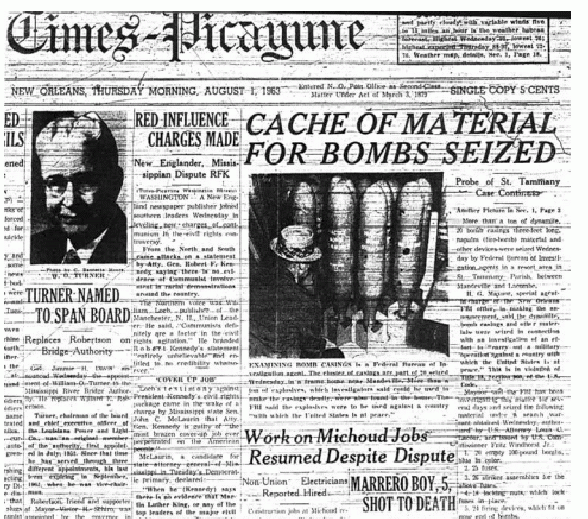


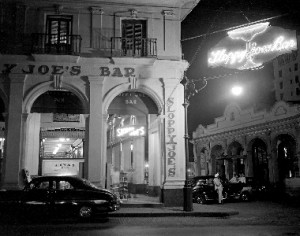
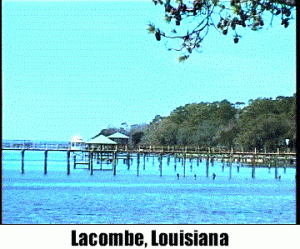
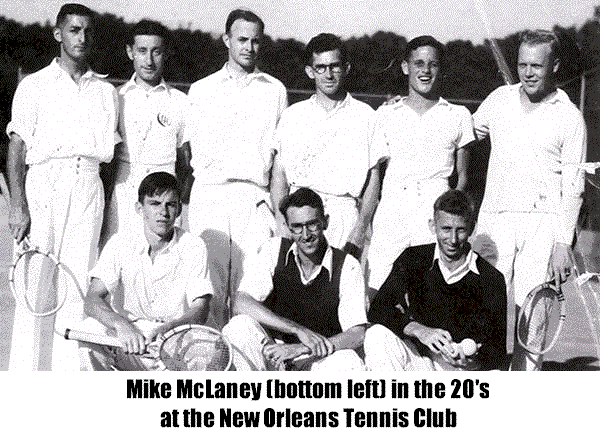
No hay comentarios:
Publicar un comentario